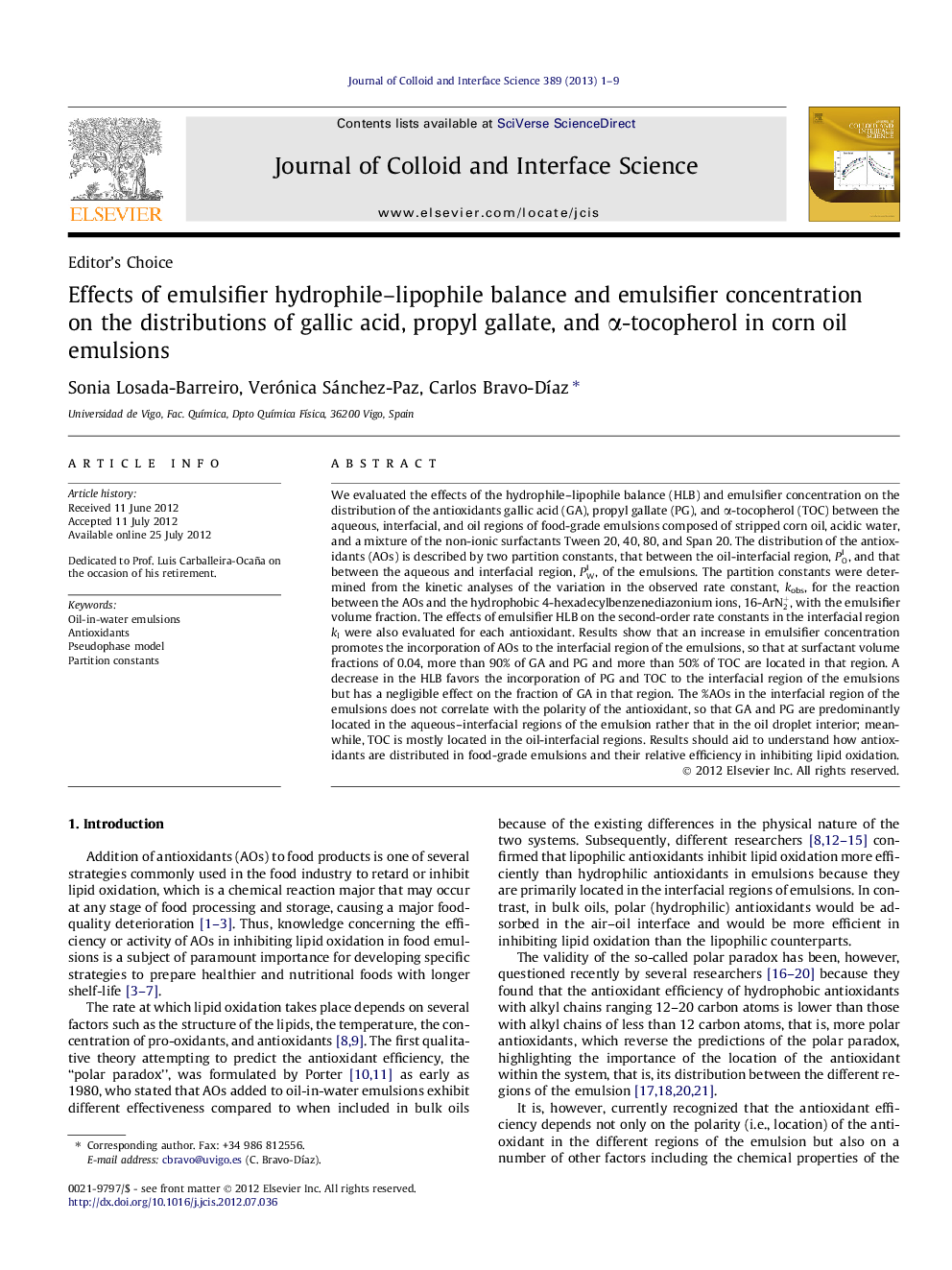| کد مقاله | کد نشریه | سال انتشار | مقاله انگلیسی | نسخه تمام متن |
|---|---|---|---|---|
| 607919 | 880564 | 2013 | 9 صفحه PDF | دانلود رایگان |

We evaluated the effects of the hydrophile–lipophile balance (HLB) and emulsifier concentration on the distribution of the antioxidants gallic acid (GA), propyl gallate (PG), and α-tocopherol (TOC) between the aqueous, interfacial, and oil regions of food-grade emulsions composed of stripped corn oil, acidic water, and a mixture of the non-ionic surfactants Tween 20, 40, 80, and Span 20. The distribution of the antioxidants (AOs) is described by two partition constants, that between the oil-interfacial region, POI, and that between the aqueous and interfacial region, PWI, of the emulsions. The partition constants were determined from the kinetic analyses of the variation in the observed rate constant, kobs, for the reaction between the AOs and the hydrophobic 4-hexadecylbenzenediazonium ions, 16-ArN2+, with the emulsifier volume fraction. The effects of emulsifier HLB on the second-order rate constants in the interfacial region kI were also evaluated for each antioxidant. Results show that an increase in emulsifier concentration promotes the incorporation of AOs to the interfacial region of the emulsions, so that at surfactant volume fractions of 0.04, more than 90% of GA and PG and more than 50% of TOC are located in that region. A decrease in the HLB favors the incorporation of PG and TOC to the interfacial region of the emulsions but has a negligible effect on the fraction of GA in that region. The %AOs in the interfacial region of the emulsions does not correlate with the polarity of the antioxidant, so that GA and PG are predominantly located in the aqueous–interfacial regions of the emulsion rather that in the oil droplet interior; meanwhile, TOC is mostly located in the oil-interfacial regions. Results should aid to understand how antioxidants are distributed in food-grade emulsions and their relative efficiency in inhibiting lipid oxidation.
Figure optionsDownload high-quality image (127 K)Download as PowerPoint slideHighlights
► We evaluated the effects of emulsifier HLB on the distribution of antioxidants (AOs).
► The %AO in the interfacial region does not correlate with their polarity.
► An increase in [emulsifier] increases %AO in the interfacial region.
► An increase in HLB favors incorporation of hydrophobic AOs to the interfacial region.
► A decrease in HLB has a negligible effect on the distribution of hydrophilic AOs.
Journal: Journal of Colloid and Interface Science - Volume 389, Issue 1, 1 January 2013, Pages 1–9